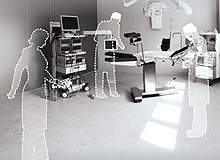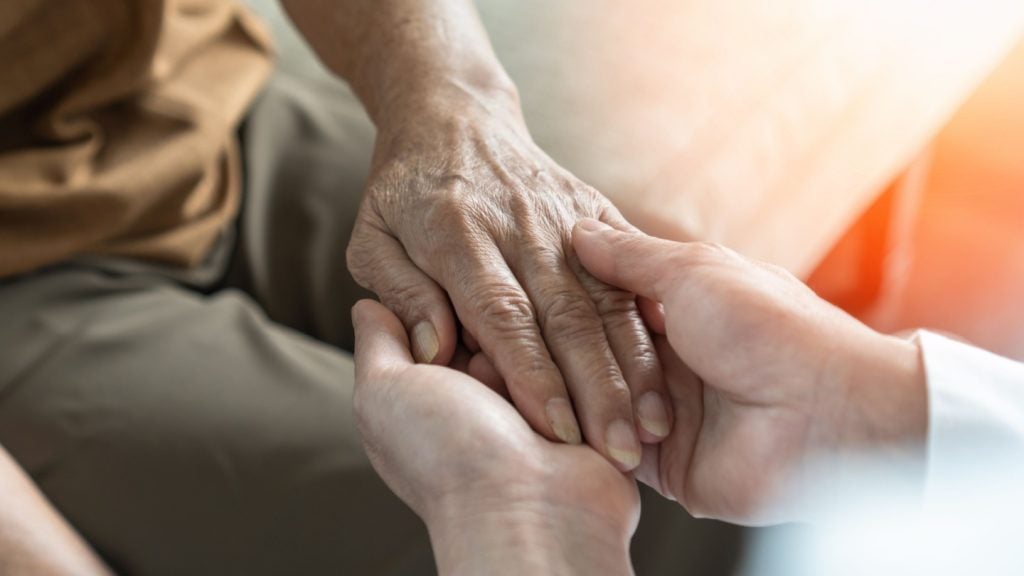
It’s indisputable that nursing, and nursing as a profession, has changed out of all recognition in the past 30, 20 or even ten years. The nurse’s role in the hospital or care setting is much more complex than it ever used to be. There’s much more technology involved, much greater responsibility, closer coordination with clinicians and other healthcare professionals and, let’s face it, much more bureaucracy and paperwork. But at its heart, there’s also much about nursing that hasn’t changed. It’s still very much about people – the patients and their families – and it’s still often a physically and mentally challenging profession within which to work.
The modern bedside may be ever more sophisticated technologically, but for most nurses, their job is still going to involve, to a greater or lesser extent, the lifting or turning of patients, working with sharps and syringes and long hours on their feet. There are, too, likely to be pressured or stressful situations and perhaps the need to work with difficult, unresponsive or even aggressive patients and their families, all of which can take their toll on mind and body.
What’s more, the combination of the aging of the workforce in both Europe and the US and the growing physical size and weight of many (especially elderly) patients is making ensuring nurses stay healthy an increasingly important priority for healthcare providers, according to Paul De Raeve, general secretary of the European Federation of Nurses Associations (EFNA).
“Musculo-skeletal injuries, such as back injuries, are the most common workplace injury for nurses. The numbers are going up, we know that. The reality is that for many nurses they are having to lift and turn older, and often heavier or overweight, patients, sometimes when they themselves may be physically quite small,” he points out.
“There are also issues around sharps injuries, which have been something we have been raising since at least 2004. Currently more than one million people get injured every year,” he adds.
A financial burden
How well do you really know your competitors?
Access the most comprehensive Company Profiles on the market, powered by GlobalData. Save hours of research. Gain competitive edge.

Thank you!
Your download email will arrive shortly
Not ready to buy yet? Download a free sample
We are confident about the unique quality of our Company Profiles. However, we want you to make the most beneficial decision for your business, so we offer a free sample that you can download by submitting the below form
By GlobalDataOf course, no employer wishes their employee to get injured and every injury is an individual tragedy. But, against the backdrop of an elderly workforce as well as healthcare systems that are facing a growing shortage of nurses, the cost of having nurses injured or absent or, worse, paying for them to take ill-health retirement is a burden healthcare providers can increasingly ill afford.
Just in the UK, for example, the Boorman Review of the health of NHS workers, published at the end of 2009, estimated that the NHS could save £555m by improving employee health and reducing absenteeism, with NHS staff absent from work because of sickness or ill-health for an average of 10.7 days a year.
The answer, stresses De Raeve, has to be a combination of better equipment, better working practices and better education, but also encouraging staff to prioritise and take more responsibility for their health and making healthier lifestyle choices – all things the EFNA has been campaigning on for many years.
“Of course there are techniques, education and tools – such as electronic patient lifts or slings or needle-free syringes – that can all help. But there are also questions surrounding whether nurses are taking care of themselves and what kinds of lifestyles they lead. There is an issue of nurses needing to pay more attention to their health in order to be fit for practice,” he suggests.
“Do they, for example, exercise or go to the gym? Are they eating healthily? Nurses will often, of course, come home from work exhausted, so they do not have the energy to go out to the gym, particularly with all the other priorities they may have around caring for their family and so on, as 95% of nurses are women. So it is difficult, and more and more nurses are leaving the profession.
“And, don’t forget, looking after health and wellbeing is not just important because of medical ill-health retirement; taking care of your workers is also a very good recruitment and retention strategy, as well as a way of ensuring you have a workforce that feels engaged,” he adds.
Legislation, of course, needs to play its part, with the EU last year publishing a green paper on the EU Workforce for Health and in May this year, unveiling a new directive on preventing sharps injuries, which came into force in June.
Similarly, it is important healthcare providers have robust, comparable data in place, both to monitor reported injuries and accidents as well as to record absence, attendance and return to work.
Alleviating blame
Yet, however good the system, equipment or training, if your organisation’s culture is such that equipment is simply not used (or replaced), that people assume injuries, aches and pains are just “part of the job” or where people are too frightened to raise complaints about unsafe working practices, then you are going to make very little progress, cautions De Raeve.
“If you really want to reduce injuries in the workplace, you need constructive dialogue between employers and employees and a culture of ‘no blame, no shame’ has to be created,” he explains.
“You need to make it part of the culture, which is a very important part of the solution. It needs to be explained clearly that the healthcare profession needs to be fit for practice, not only from the educational perspective, but also in terms of its health. Nurses do not, of course, need to become priests in their lifestyle habits, but it is important we have as healthy a workplace as possible.
“Yes, people need to take responsibility for their own health, but there is also a lead that employers can take, for example in terms of providing subsidised activity clubs or in-house gym facilities. Or it might be a question of offering some benefits, perhaps a cycle-to-work scheme.
“Continuing professional development is also important, of course. There does need to be ongoing learning, for example around the right ways of lifting or the use of alternatives to conventional syringes and so on,” adds De Raeve.
Culture change
When it comes to technology, needle-free delivery systems have been around for a number of years now, though the greater challenge can be, first, in making the business case that a provider should invest in them and, second, creating the culture change that ensures people actually use them. Similarly, there are now a multitude of patient, ceiling and tracking hoists commercially available on the market, with the momentum towards the use of such devices in part driven by many healthcare providers moving to “no lift” patient handling policies.
But, again, technology only becomes useful on the day-to-day level when it is properly understood, when workers know how to use it to its full potential and have access to it in the right place at the right time, as De Raeve cautions.
“There is a lot of innovation that goes around the development of tools and technology to make nurses’ lives less physical and difficult. But a lot of the time tools are developed without input from the nurses themselves,” he says.
“So you might find a trust invests in a lift, but then it is simply put in storage because, for the nurses, it is clumsy or does not move quickly enough or is too complicated. Also, often you will get a situation where you just have one lift for a four-storey hospital which is, clearly, a lot of the time going to be useless because it is in the wrong place,” he adds.







